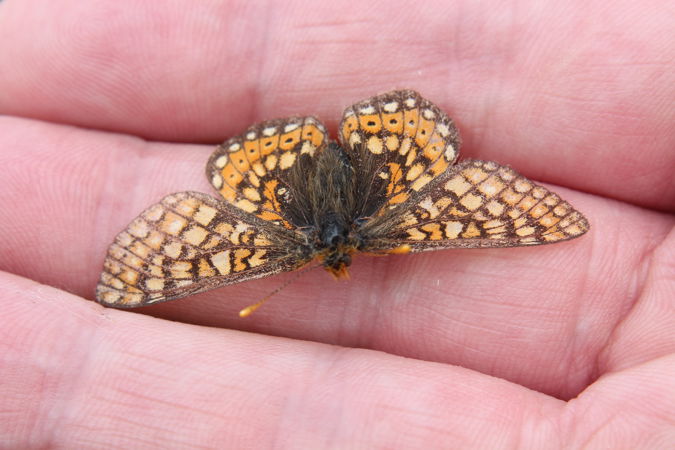Unique lowland pastures provide sanctuary for threatened butterfly

The unique lowland Rhos Pastures found in parts of Wales have once again proved to be a rich sanctuary for a now threatened butterfly species.
Natural Resources Wales’ (NRW) Environment Team in Ceredigion has recently carried out crucial surveys to monitor the Marsh Fritillary Butterfly at the Rhosydd Brynmaen Site of Special Scientific Interest (SSSI). These efforts are part of a broader mission to conserve these rare butterflies and the unique Rhos Pastures they inhabit.
Rhos Pastures are species-rich marshy grasslands found in lowland regions like Ceredigion, Carmarthenshire, and the South Wales coalfield. These habitats are essential for the Marsh Fritillary Butterfly, providing the ideal environment for their survival and reproduction. Rhos Pastures are known for their diverse plant life and the delicate balance of the ecosystem they support.
The first phase of the surveys, completed in late June, aimed to gather essential data on the Marsh Fritillary Butterfly, which thrives in these unique grasslands. The second phase, set for late summer, will focus on counting the egg webs laid by these butterflies, providing further insights into their population health.
Once widespread throughout the UK, the Marsh Fritillary has suffered a dramatic 79% decline in distribution since the mid-1970s and a 60% decline in abundance in Wales. The degradation of Rhos Pastures has been a significant factor in this decline. Today, west and south Wales remain vital strongholds for this endangered species.
During the survey, NRW officers not only observed a good number of Marsh Fritillary Butterflies but also documented the diverse plant life that supports this ecosystem, including Birdsfoot Trefoil, Devil’s Bit Scabious, Greater and Lesser Butterfly Orchids, Heath-Spotted Orchid, and Ragged Robin.
Reflecting on the survey, NRW’s Ceredigion Team Leader, Dr. Carol Fielding shared, "It’s always a treat to spend a day in beautiful Rhos Pastures surveying butterflies and seeing the rich plant life that Rhos Pastures are comprised of."
"We saw encouraging numbers of butterflies, but we won't have the results until we carry out the second half of the surveys in late summer. Last year's results were encouraging, and we are hoping for similar results this year."
"It’s very encouraging to see that the habitats where we have ongoing management agreements with landowners are improving in condition," Dr. Fielding noted, highlighting the positive impact of these efforts on the environment and the future of the Marsh Fritillary Butterfly.
